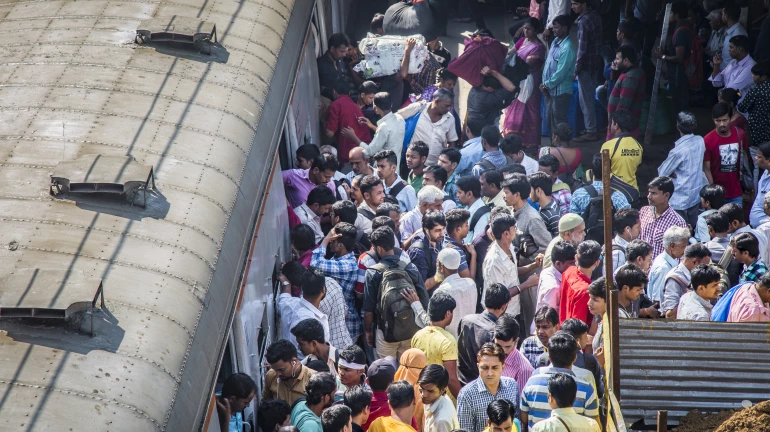
As per the 2011 Census D1 data that was revealed in July, the migration of people that were born outside Maharashtra has seen a slowdown. This is contrary to the belief in some political circles. The slowdown in the migrant population can be attributed to a variety of factors as laid out by the survey.
Data from the 1991 census reveals that 21.1 per cent of Mumbai residents were born outside the state. Though the number increased to 26.4% in 2001, the 2011 census saw the migration grow to 27.66 per cent. Though the 2011 census data was recorded between April 2010 and February 2011, it was published in stages by the authorities.
The crucial part of this census is that the number of migrants that fall in the 15-34 age group has seen a reduction of 0.57 per cent between 2001 and 2011. This comes despite the fact that Mumbai’s population has seen a growth of 8.4 per cent from 1.19 crore to 1.29 crore in the same period.
Also Read - 11.86 Lakh Migrant Labourers Sent Back Home In 822 Shramik Trains From Maharashtra
“There is a definite slowdown in the number of out of state migrants that are coming to Mumbai. This is the case with all major old cities which have hit a point of saturation. Mumbai is no longer an industrial hub and unlike popular perception, it does not attract migrants like in the past. Migrants are now attracted to cities like Surat or Pune,” Professor Ram Bhagat said. He is the Head of the Department of Migration and Urban Studies at the International Institute for Population Sciences (IIPS).
Migration has been one of the major contributing factors for the growth of Mumbai over the past several decades. However, as per experts, the reduced economic opportunities, as well as the high cost of living, is swaying migrants from the city. It is further believed that the high housing costs in Mumbai push migrants to stay in the neighbouring Thane district.
Also read - More Than One Crore Migrant Workers Returned Home On Foot During The Coronavirus Lockdown
Speaking of Thane, census data shows that migration has slowed down to a certain extent in this region as well. As per the 1991 census, migrants only made up for 10.21 per cent of Thane’s population. The number more than doubled to 21.46 per cent in 2001 and stood at 22.81 per cent in the 2011 census.
Similarly, Pune’s migrant population saw a rapid increase between 1991 to 2001 (from 3.74 per cent to 7.90 per cent) though the 2011 census shows that the number has slowed down somewhat to 10.05 per cent.
The 2021 census is expected to reveal a starker image of migration considering how the coronavirus pandemic forced a large scale reverse migration, mostly consisting of labourers from neighbouring states.
Also Read - No Need For Shramik Special Trains, State Is Witnessing Reverse Migration: Bombay HC





